A Memorandum:
For a composition which has not been named
Hu Fang
The first time I “saw a performance” by Tarek Atoui was at a workshop in Phnom Penh in 2010. I use the word “saw” because my first impression was that Tarek was dancing with the invisible forces swirling around him, and in further discussion with him, I realized that what we usually consider to be the performance process was for him precisely a compositional process that is inseparable from improvisation. Between his physical perceptions, his customized electronic instruments and the flow of sound in the site, he constructs an irreproducible composition/performance/exchange system, and these unified interconnections express the potential of the contemporary sound art he holds in such high regard. Each “performance” is a process of self-study through this sound production system, and an exercise in resisting the commodification of sound. At first, when I posed all kinds of questions to Tarek about contemporary music/sound production, I was hoping to get quick answers from him, but in the end what I learned was in fact how to turn questions into an impetus for mutual learning. In this process, some of my questions were answered, some dropped, some were no longer questions, and some turned into new questions – all contained in this as-yet unnamed research and creative practice.
In 2012, when Tarek was developing his research on “collective instruments” for documenta 13, we both felt we should do something together to respond to our respective questions. And so, with “collective instruments” as our starting point, we began our dialogue. Initially, my interest in “collective instruments” was closely related to the “collaborativity” produced in the process of Tarek’s sound practice – a “collaborativity” immediately manifested in the relations between Tarek himself and the instrument and the composition, but one that develops, as the exploration deepens, into a more profound process of exchange and integration elaborated between self and other and different worlds.
The “collective instrument” is an issue Tarek has raised through his sound practice, but it also relates to how we all create connections with others through sound. Ultimately, anybody can become an instrument – not only in terms of producing sounds, but all the more so in terms of awareness. Accordingly, this probably explains why, on his first research trip to China at the end of 2012, Tarek did not bring any instruments or make any performances. We spent most of our time meeting and talking with people from all kinds of fields: poets, writers, architecture historians, cultural researchers, artists. And the musicians we did see covered a wide range of backgrounds, from classical to folk, rock, and experimental music. It should be said that we were curious about the dimensions of the space of consciousness formed by these individuals’ different understandings of their “instruments,” and so we were sensitive to the collective auras and flows of awareness revolving around this issue.
It was precisely during this process that the Chinese gŭqín [1] caught our attention. From the start, the gŭqín was related to the issues of musical notation shaped by the contemporary composition that we were investigating, and when Tarek introduced me to the scores of Cornelius Cardew, I almost subconsciously responded to them as scores for the gŭqín, triggering our shared interest. And so, during his visit to Beijing, Tarek met two friends: Wu Na, a gŭqín performer, who helped him better understand the imaginative capacity of the gŭqín; and Hao Liang, a Chinese ink-painting artist, who brought him to another key phenomenon that would later provoke incessant questions out of us: the yăjí. [2]
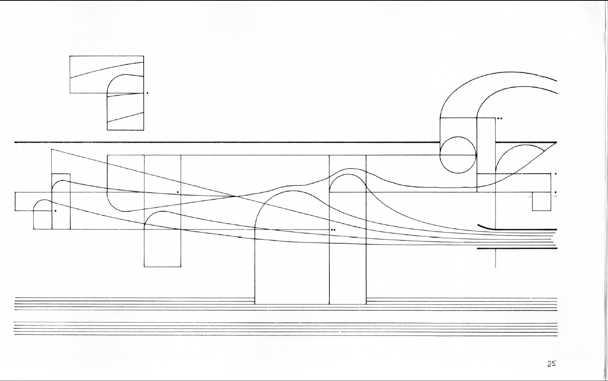 Detail of one of Cornelius Cardew’s scores for Treatise
Detail of one of Cornelius Cardew’s scores for Treatise
——- ————- ——-
Treatise is a series of some 200 scores that Cornelius Cardew spent four years working on, going even so far as to study graphic design in order to complete the project. Treatise is an agreement, but it is not a composition. The scores simply look like “this.” There is no stated instrument, no stated duration, no stated number of musicians – there is nothing except “this,” and you can do whatever you want with it.
This form is so important and inspiring for me because I constantly meet musicians and composers who still work on interpreting it, each in their own ways. Simply through the forms, the space and the scores that Cardew made, the work opens up enormous possibilities for others to be inspired. But the sounds that emerge from it are all so diverse and so interesting.
– Tarek Atoui
——- ————- ——-
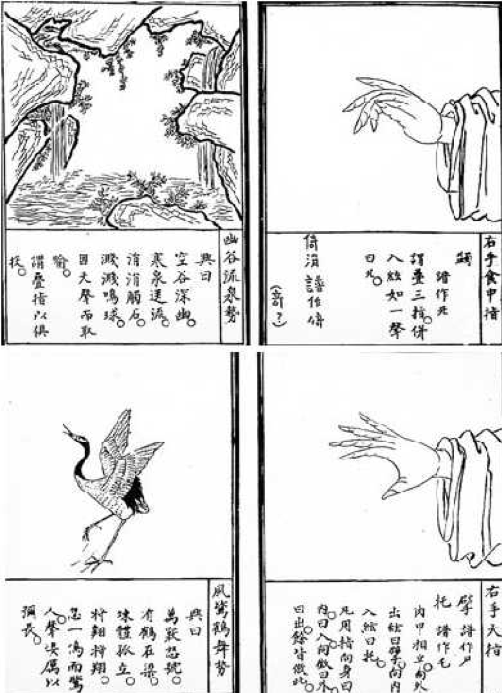 Gŭqín: tablature and playing technique
Gŭqín: tablature and playing technique
——- ————- ——-
Tarek: …The example of the gŭqín is really fantastic for me, because if you look at the principles behind the instrument, there are just seven strings stretched tight over a wooden surface, but even this very simple situation of putting strings on a piece of wood has opened a huge realm of possibilities that are still being discovered. This is where I want my practice to be able to head towards…starting from a simple set of rules for a collective instrument, which opens possibilities for the people who perform it, and where everyone can feel that potential while experiencing different levels of implication – not only one method, or only one role or function.
HF: I think it is interesting to think about the natural body of the instrument, which is actually based on the connection between a certain invisible space and a certain visualization of the spatial form, but yet is never complete on its own as a physical form, so I guess there is also a reduction of the desire to be complete in itself.
Tarek: I am always reminding myself of how we started to “undo” and “not do,” and this brings us back to the idea of the gŭqín…sound without sound. I want to stop the intellectual activity of always doing or always thinking, “Let’s head straight toward the solution” – this fixation on making things happen. No, let’s give it time, let’s not make it happen now; it will come as a natural result; it will flow by itself, I think.
If you complete it all at once, it means that you had to eliminate several possibilities or establish a set or parameters in order to privilege certain possibilities over others. I think it is much more interesting to be aware of all the possibilities and to be able to rearticulate them each time, rather than to articulate them only once while discarding the others.
– From a conversation between Tarek Atoui and Hu Fang, held during Tarek’s first visit to Guangzhou and Beijing, January 2013
——- ————- ——-
Let’s say that what Cornelius Cardew opened up in his Treatise is the following kind of potential: the score becomes an open space-time structure, and when different individuals in space-time encounter it, an unpredictable sonic diversity is produced, so that the so-called composer disappears into the unified field where these individuals converge. If so, then starting with the collective listening situation formed around it, the yăjí enables its participants to sense a unified space-time structure that is prompted and formed by certain kinds of encounter: journeys, shānshuĭ, the sound of the wind, the sound of the qín, poetry readings, breathing, changes in the light, life realizations and visions shaped by departures and returns. What is important is not the production of sound, but rather that the sound of the qín becomes a medium for integrating the world, without at the same time becoming the center of the performance. We began to feel with increasing clarity that all the encounters and discussions in the research process were leading not to the production of new sounds, but rather to the search for a new “ground” for cultivating sound.
On Tarek’s second visit to Guangzhou (in July 2013), we had a chance to truly enter into a kind of praxis: from planting, we learned how to understand plants and soil. By then, as part of the research for the Mirrored Gardens project space – a new initiative of Vitamin Creative Space – we were already studying planting in an agricultural environment on the outskirts of Guangzhou. When Tarek came, it was summer, the season for melons and gourds. We stayed together in the village, riding our bicycles or walking to the trial field everyday. Tarek felt an urgent need to study and understand everything involved in the cultivation process: the soil, the compost, the bamboo supports for the plants. In these unfamiliar circumstances, the only thing of which we were certain was that we would continue to listen to and observe the changes in relations between people, soil and plants brought about by the planting process.

——- ————- ——-
This time, after we arrived, we went to the village and the land everyday. This is where I really think something started to appear, because I understood many things – also from our discussions. It was like a vacation, but a very intense vacation: look at the surroundings, sit there, talk – and talk also in the land. I started to understand, actually – also from looking at the agriculture, and at how farming is approached and done – that we were all in a way learning about what to do in this place. And for me it has become very important not to fall into the trap of considering the place as an existing model of a gallery space, but rather to look at it as a whole, and to think of it as a new ground. The word “ground” is very important for listening, seeing, doing – for everything.
For me it’s inspiring to see, for example, the soil of the new land and how it was transformed and purified. This layering between old and new ground inspires me to think about how it can mean something in sound composition.
This is about learning from the ground, from the people who run this place, from the environment, which is for me what the project is about. This is really where the dimension of yăjí enters: we are all part of the yăjí formula, and I can’t concretely say how this composition will grow.
– From a conversation between Tarek Atoui and the Vitamin team, July 19, 2013
——- ————- ——-
Tarek started trying to describe the potential connections between these observations and other things (at first it was their relations with things like soil, plant growth, planting supports and people), as well as our exploration and sound composition. When he came for another visit to Guangzhou at the end of 2013, construction had already started on Mirrored Gardens, and our observations naturally began to extend to architecture. After the initial “dictionary of observations” on planting, architecture brought us to a discussion of “constructed nature,” which not only led us to consider gardens, the relations between sound and space, and the architectural methods of ancient China – especially the dŏugŏng [3] rafter brackets – but also returned us to the inquiry into the gŭqín, yăjí and Cardew. As in the soil purification process, all of these elements were circulating and deepening within a continuous spiral of correspondences.
I always remember Tarek, sitting on a rock in the field, recording his impressions of the scene. These observations and thoughts gradually accumulated into a “field book,” which clearly, in corresponding to what we understood of the planting process, was not an autonomous compositional system. If this “sound soil” can inspire people to open up their imaginations, to open up a more everyday “rehearsal,” so that it is possible to more broadly connect, from the experience of the “here and now,” with different moments and the unfolding and deepening of different life experiences, then perhaps it will grow into a “score” on its own, and its abstract characteristics might also allow it to bear forth all kinds of unpredictable forms of improvisation. Nor can the so-called “instrument” be separated from all the elements related to “composition.” In this sense, the production of a future “instrument” itself nurtures an ecosystem of sound that can continuously refresh its circulation, continuously learn from itself and from others.
In this convoluted, serendipitous journey, we suddenly realized: perhaps we were already within the yăjí, not only imagining future sounds, but also seeking the means for a daily practice that is conducted in order to bring together different futures, in which the so-called “score” can be repeatedly used as a medium for exercise and navigation, and the composition and the site, the people in the site, their everyday circumstances, and the study of life experiences can no longer be separated.
The “score” cultivates our perceptions themselves to become an “instrument,” and as such it becomes possible, in the sea of vibrations between internal sounds and external sound waves, to approach a unified existence.
Translated from the Chinese by Andrew Maerkle.
_____________________________
[1] The gŭqín is a plucked seven-string musical instrument of the zither family. It has a long, bulky body and is usually rested on a table or other support when played. Known as “the instrument of the sages,” it is rooted in Chinese scholarly and literati culture, and is often associated with Confucius.
[2] Literally meaning “elegant gathering,” the yăjí is a traditional type of gathering that developed in ancient China, where scholars would gather in teahouses, garden pavilions, and deep forests, or by rivers and brooks to share tea, enjoy food and wine, compose poems, play music and create paintings, with the yăjí itself emerging as a subject for painting. Yăjí typically lasted for several days. The Sage of Calligraphy, Wang Xizhi (303–361), is said to have organized the first yăjí when he gathered friends at his Orchid Pavilion to discuss art and poetry while sharing cups of wine that were plucked out of a stream as they floated on its waters. The yăjí provided a means for scholars to develop a holistic understanding and approach to the relations between human and nature.
[3] Dŏugŏng (literally, “cap and block”) refers to the system of interlocking wooden brackets used to join columns to the frame of the roof in traditional Chinese architecture.
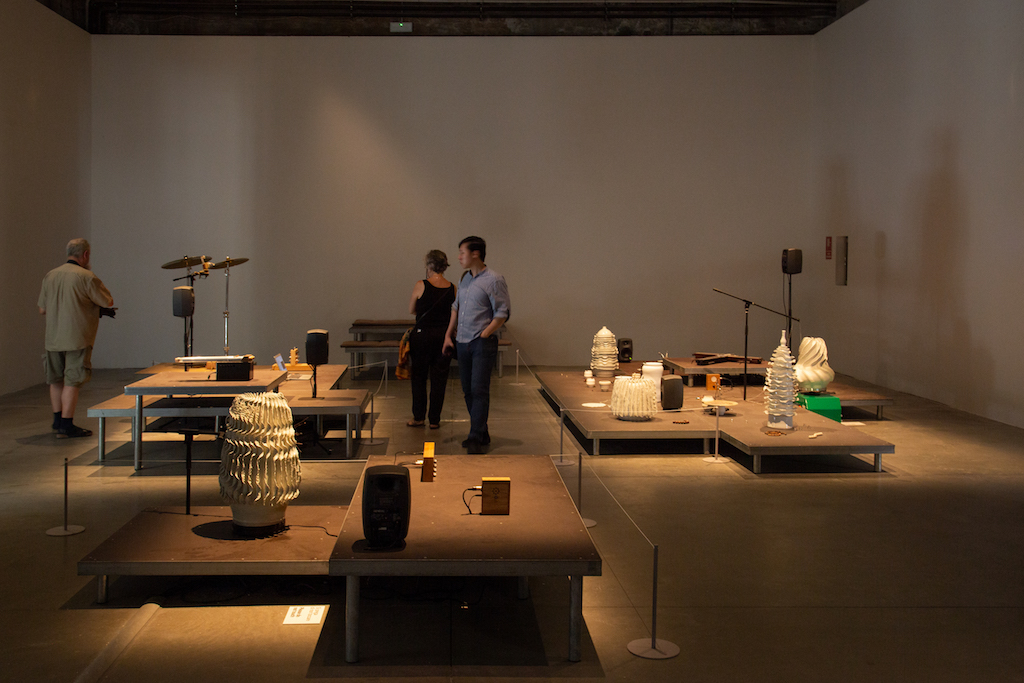
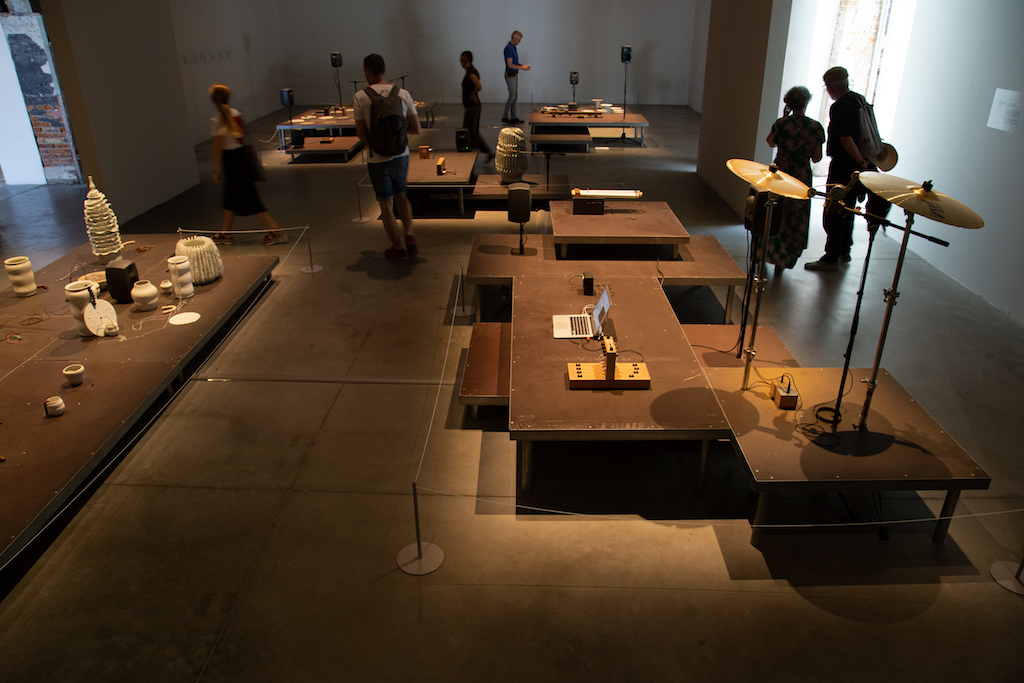
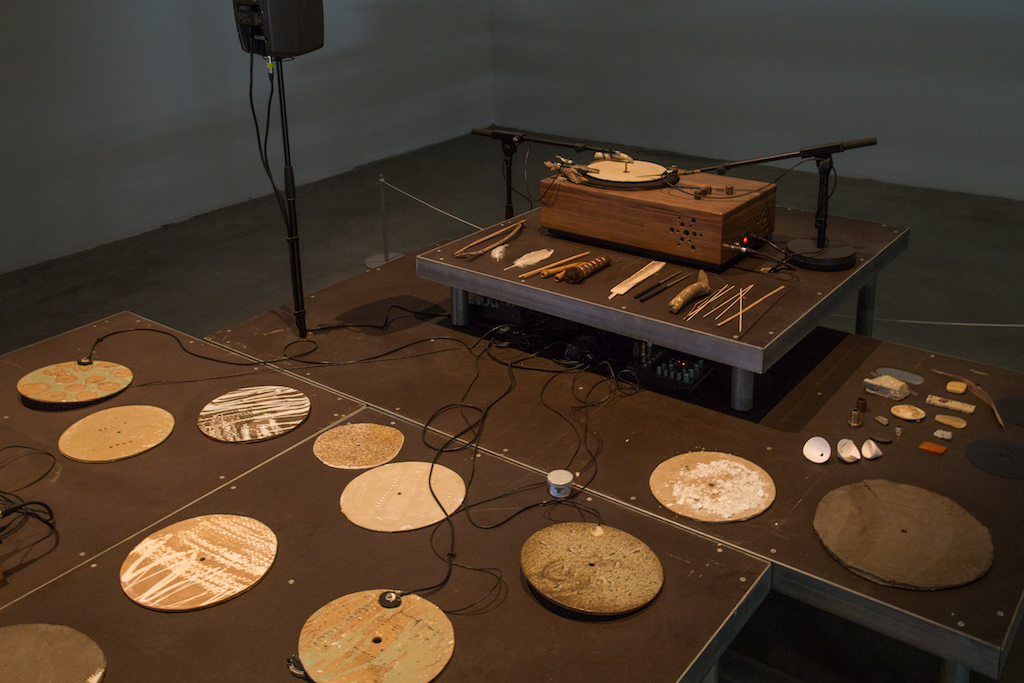
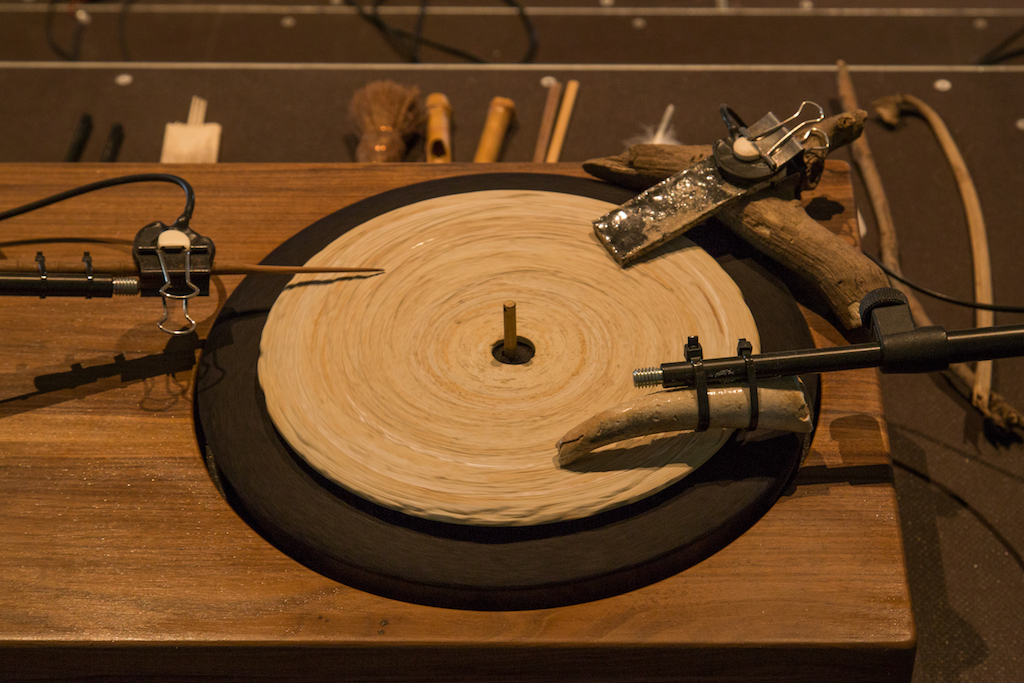
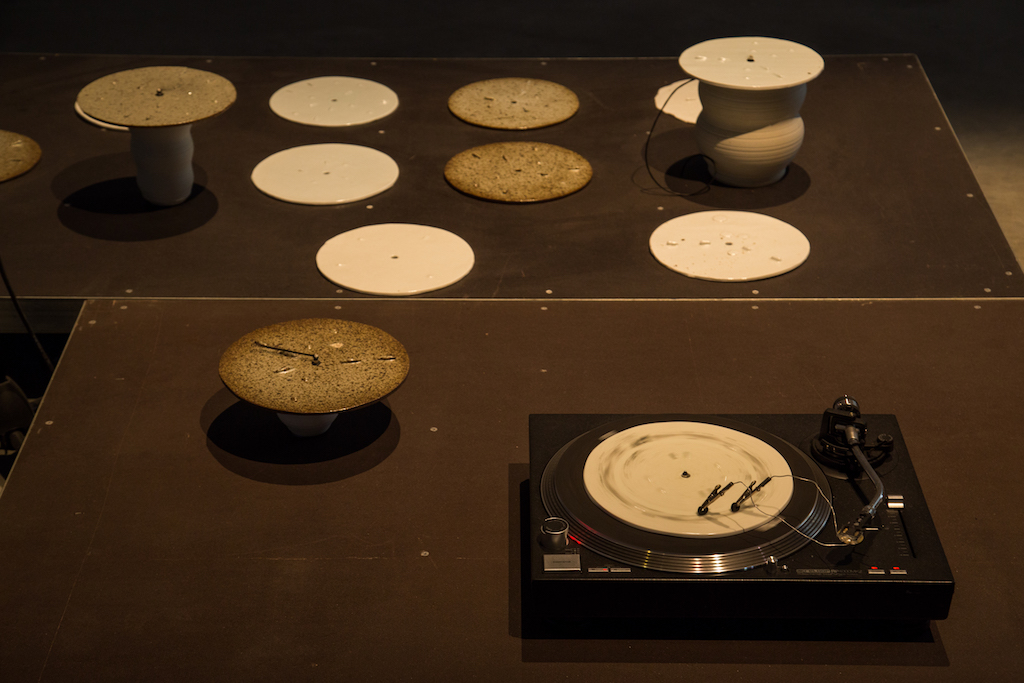
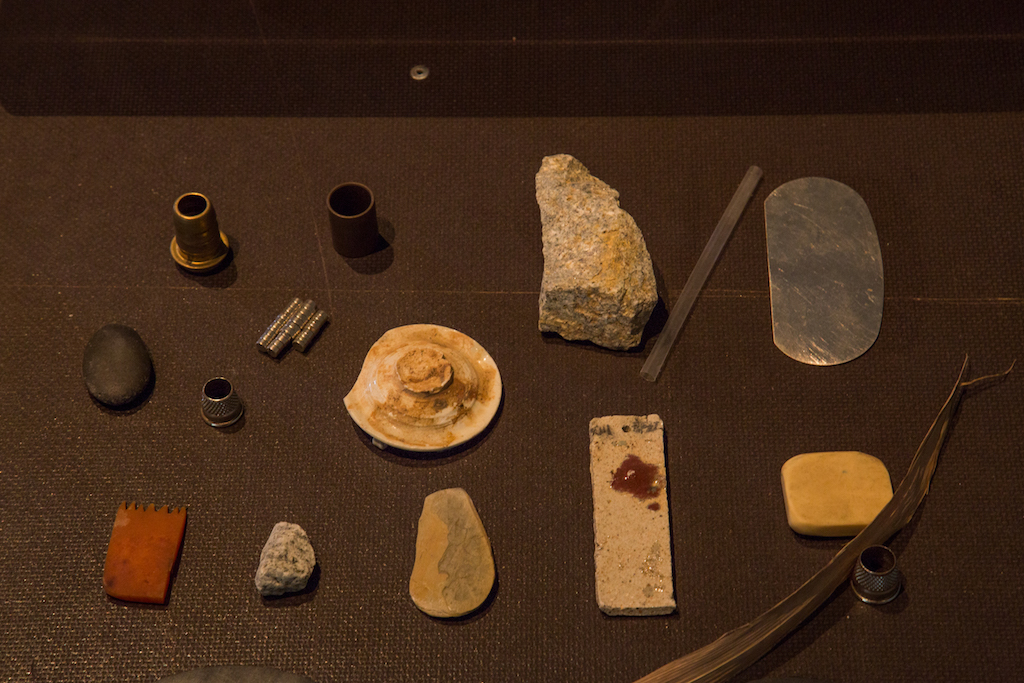
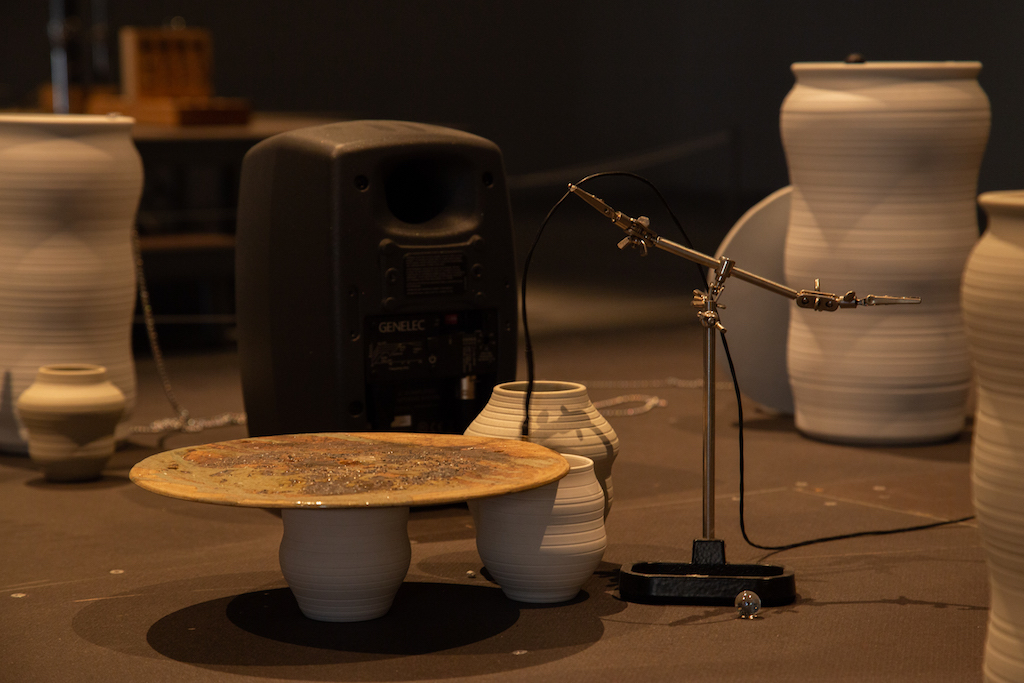
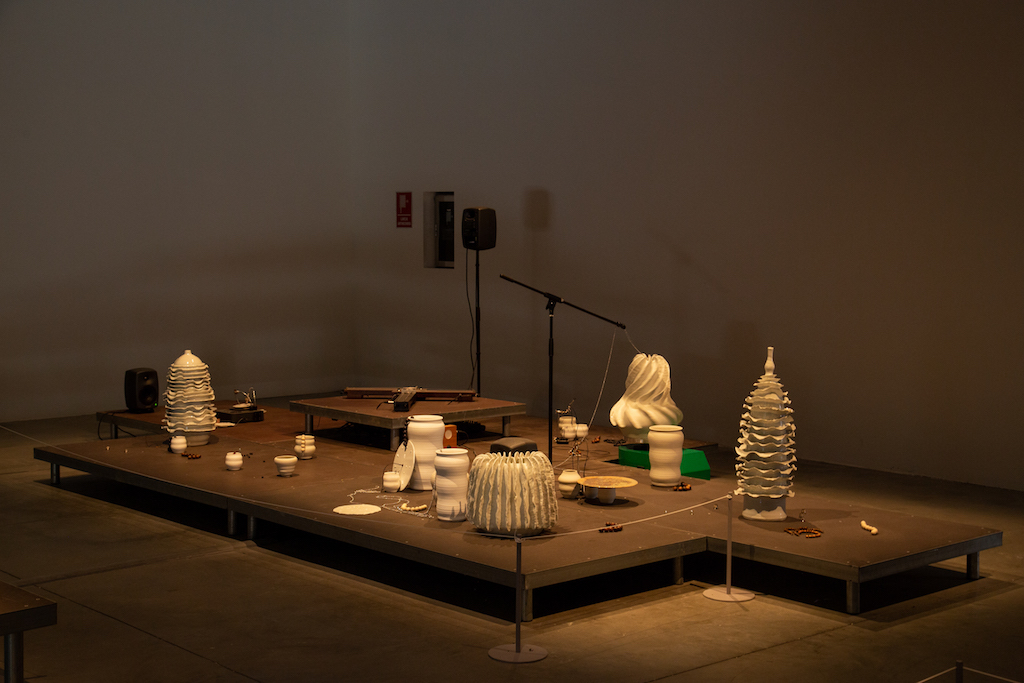
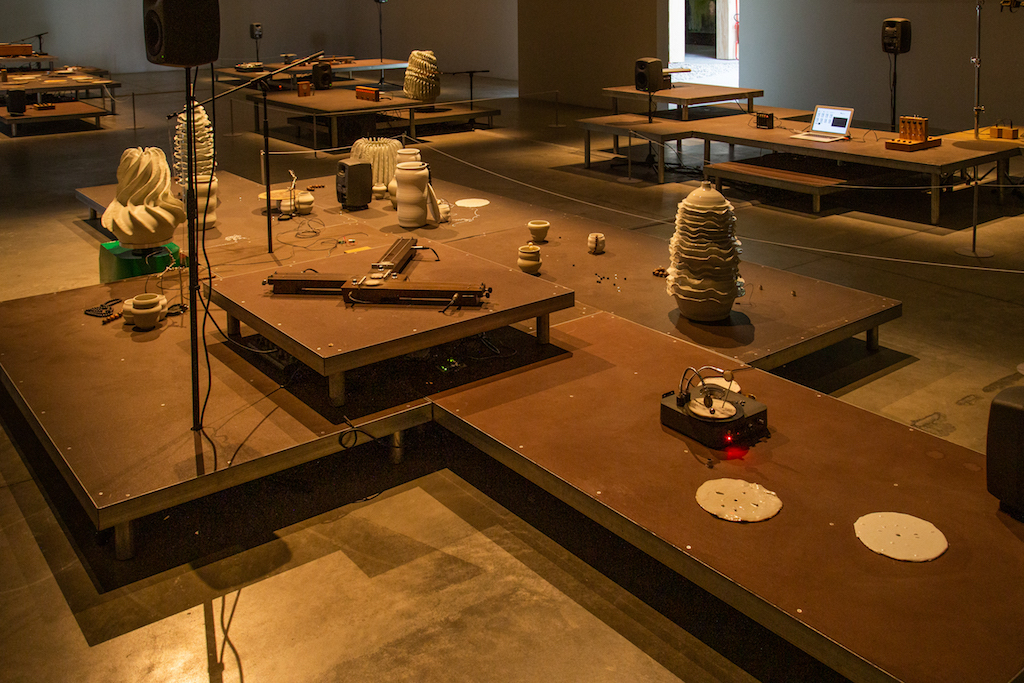
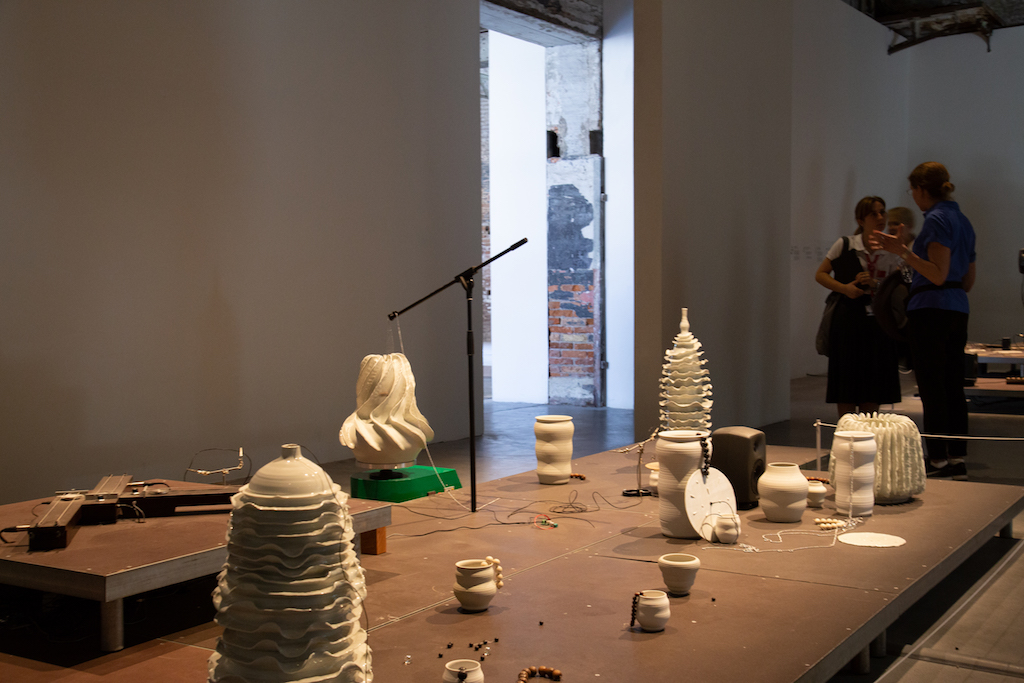 Exhibition view of “The Ground” at 58th International Art Exhibition – La Biennale di Venezia, “May You Live In Interesting Times”, Venice, 2019
Exhibition view of “The Ground” at 58th International Art Exhibition – La Biennale di Venezia, “May You Live In Interesting Times”, Venice, 2019





 Exhibition view of “The Ground: From the Land to the Sea”, NTU Centre for Contemporary Art Singapore, Singapore, 2018
Exhibition view of “The Ground: From the Land to the Sea”, NTU Centre for Contemporary Art Singapore, Singapore, 2018





 Exhibition view of “The Ground”, Mirrored Gardens, Guangzhou, 2017
Exhibition view of “The Ground”, Mirrored Gardens, Guangzhou, 2017
Text: The Pavilion, ©Author, The Pavilion, 2019
Photo:
Exhibition view of “The Ground” at 58th International Art Exhibition – La Biennale di Venezia
Courtesy of the artist and Vitamin Archive.
Photographer: Wen Peng
Exhibition view of “The Ground: From the Land to the Sea”
Courtesy of NTU Centre for Contemporary Art Singapore.
Exhibition view of “The Ground” at Mirrored Gardens
Courtesy of Vitamin Archive.